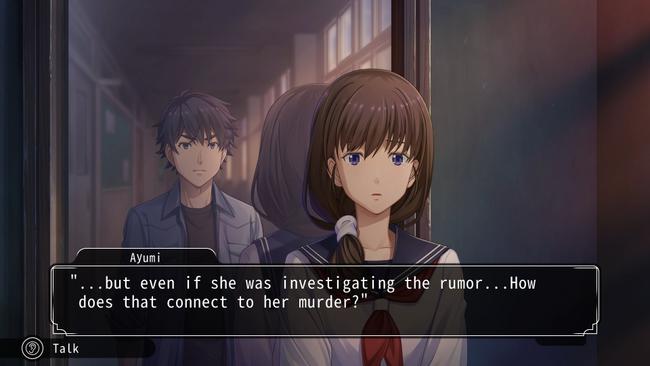
Famicom Detective Club (2021) Review
We’ve come a long way since the NES. Back during videogame’s relative infancy, western players could never expect for all of Nintendo’s 1st party offerings to release outside of Japan. Games like the Famicom Disk System-exclusive “Famicom Detective Club” series seemed doomed to obscurity over here in the west. Of course, the Disk System itself never released overseas – but the incredibly late release of the two SNES remakes for the series certainly didn’t help matters, either. Even then, I’ll be frank – despite all the strides that the industry, and Nintendo, have made in the last several years, I didn’t expect that the Nintendo Switch remakes for the games would make their way across the pond, either. Now that the titles are making their way to North America and Europe at the same time as Japan, I couldn’t be happier that I was wrong.
Famicom Detective Club: The Missing Heir and Famicom Detective Club: The Girl Who Stands Behind are brand-new remakes of the 80s classics, which themselves were pioneers of the Japanese Adventure game – The Famicom Disk System classics were some of the original titles in this style, helping to inspire countless titles in the genre, including games like Yu-No and Ace Attorney, ever since.
Historical significance aside, these are games from the 80s – so how do these remakes stack up in the modern-day? Aesthetically, Famicom Detective Club is stunning. The hand-drawn art is bursting with character, even if the art style has seen a noticeable change from the original. The amount of animations that characters show off in each scene is impressive – as well as the idle animations you might spy in the background. Every so often the game will showcase short cutscenes to accentuate key story moments, and they’re always a delight whenever they appear. Famicom Detective Club’s soundtrack is a certified banger, particularly The Girl Who Stands Behind’s, and the remakes have done them justice. Beyond just doing a great job of setting the tone for each scene, they’re an absolute joy to listen to.
While the presentation has seen a major upgrade, the same can’t quite be said for the gameplay. While it won’t be so much of a problem with The Girl Who Stands Behind, which deals with less subjects at a time, and with less murders to contend with at that, The Missing Heir, in particular, can be a veritable nightmare to progress in. When you have 4 or 5 people that you can talk to, with 7 or 8 different subjects to cycle through - figuring out the right combination of subjects to broach with which characters, and in what order, is an absolute pain. Then there’s the pixel hunting – some scenes in The Missing Heir ask you to scour the screen for such a small and easily missable detail that you’re bound to find yourself stuck. Sometimes the game will do a good job at pointing you in the right direction, but often that’s simply not enough.
The Girl Who Stands Behind is probably the best place for players to start. While it’s technically the sequel, it takes place before The Missing Heir, offers both better pacing and a brisker difficulty, and – at least in my opinion – a much, much better overall experience. Now don’t get me wrong - The Missing Heir is still worth a play, for sure, but the story didn’t grip me nearly as much, and I found myself frustrated more often than not. Taking a glance at guides for the original releases for both games, this doesn’t appear to just be a quirk of the remakes – the difficulty was clearly easier for the sequel, even way-back-when. I can’t say if this was a deliberate decision, a result of tightening up the framing to make things less obtuse, or a mixture of both. Either way, I had a much better time with the prequel than with The Missing Heir.

Regardless of the game you choose to start with, both are played in more or less the same way. As you progress through the game you’ll pick up tips about persons of interest, locations, and objects – and it’s your goal to question people to help point you towards more information about a series of tragic murders. You’ll also be charged with interacting with and examining the environment for clues, as well as answering questions that pertain to the case. Neither game is particularly long to finish. While The Girl Who Stands Behind does offer some replayability thanks to a rating system at the very end, it doesn’t impact the story in any way. The Missing Heir, once you uncover the path forward, is completely linear. Each story will probably take the average player 8 to 10 hours to finish, and unlock a sound test at the main menu after the credits roll.
Frustrations aside, Famicom Detective Club still manages to captivate all the same. It’s a miracle that these two Nintendo classics were ever localized, let alone as a global simultaneous release with these remakes. It was a blast to join the Detective Club after so many years, and I can only hope one day we can see a similar remake for the series’ 3rd game, sales permitting. If you’re at all a fan of either the Visual Novel or Japanese Adventure game genres, you owe it to yourself to experience this vital part of their history.